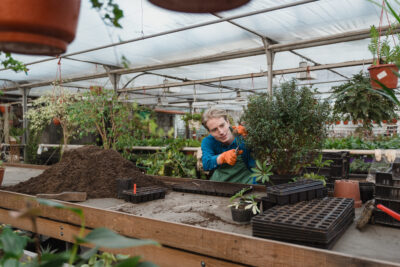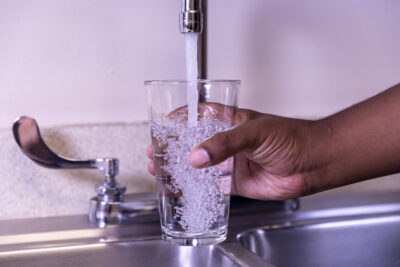
The Importance of Watering Succulents After Repotting

Succulents have become incredibly popular in recent years, thanks to their unique and low-maintenance nature. These plants are known for their ability to store water in their leaves, stems, and roots, making them highly drought-tolerant. However, when it comes to repotting succulents, proper watering is crucial to ensure their health and survival.
We will delve into the importance of watering succulents after repotting. We will discuss why watering is necessary, the ideal watering techniques, and the potential consequences of overwatering or underwatering succulents post-repotting. Additionally, we will provide some helpful tips and guidelines to help you establish a proper watering routine for your newly repotted succulents, ensuring their growth and longevity.
- Watering succulents after repotting helps them establish new roots
- It prevents the plants from becoming dehydrated during the transition period
- Proper watering encourages healthy growth and prevents root rot
- Watering after repotting helps settle the new soil around the roots
- It provides essential moisture for the succulents to recover from the stress of repotting
- Regular watering after repotting promotes overall plant health and vitality
- Frequently Asked Questions
Watering succulents after repotting helps them establish new roots
When it comes to repotting succulents, one crucial step that often gets overlooked is watering them after the process. Many succulent enthusiasts may assume that withholding water immediately after repotting is the best course of action to prevent overhydration. However, this couldn't be further from the truth.
Watering succulents after repotting is essential for their overall health and successful root establishment.
After being disturbed during the repotting process, succulents need proper hydration to recover and initiate the growth of new roots. Watering them helps to alleviate stress and provide the necessary moisture for their survival.
Benefits of watering succulents after repotting:
- Promotes root development: Watering succulents after repotting stimulates the growth of new roots. The added moisture encourages the roots to explore the soil and establish a strong foundation for the plant.
- Accelerates recovery: Repotting can be a stressful process for succulents, as it involves disturbing their roots and transplanting them into a new environment. Watering after repotting helps the plants recover faster by providing the necessary hydration to support their healing process.
- Aids nutrient absorption: Water acts as a carrier for nutrients in the soil. By watering succulents after repotting, you ensure that these plants can access the essential nutrients present in the new potting mix. This helps them thrive and maintain their overall health.
- Prevents dehydration: Succulents are known for their ability to store water in their leaves and stems. However, during the repotting process, some of their water reserves may be lost or damaged. Watering after repotting ensures that the plants have enough moisture to prevent dehydration and maintain their vitality.
It is important to note that while watering succulents after repotting is crucial, overwatering should still be avoided. Finding the right balance and allowing the soil to dry out between waterings is key to preventing root rot and other moisture-related issues.
 How Often Should Succulent Plants be Watered?
How Often Should Succulent Plants be Watered?Watering succulents after repotting is a vital step that should not be overlooked. It promotes root development, aids in recovery, supports nutrient absorption, and prevents dehydration. By providing the necessary moisture, you give your succulents the best chance to thrive in their new pots and continue to beautify your space.
It prevents the plants from becoming dehydrated during the transition period
After repotting succulents, it is crucial to water them properly to prevent dehydration during the transition period. Repotting can be stressful for plants as they are being uprooted from their current environment and placed in a new pot with fresh soil. This process can disturb their root systems and disrupt their ability to absorb water effectively.
Watering the succulents after repotting helps to provide them with the hydration they need to recover from the stress of being transplanted. The water allows the plants to replenish any lost moisture and helps them establish new root growth in the fresh soil.
During the transition period, the succulents may experience some shock or damage to their roots. By watering them, you are helping to alleviate the stress and promote healing. Watering also aids in preventing wilting and leaf drop, which are common signs of dehydration in succulents.
However, it is crucial to strike the right balance when watering newly repotted succulents. Overwatering can be just as harmful as underwatering, as excessive moisture can lead to root rot and other fungal diseases. It is essential to allow the soil to dry out slightly between waterings to prevent these issues.
To ensure proper watering, it is advisable to use the "soak and dry" method for succulents. This means thoroughly watering the plant until water drains out of the pot's drainage holes and then allowing the soil to dry out completely before watering again. This method mimics the natural rainfall patterns in succulents' native habitats and helps promote healthy root growth.
 Top vs. Bottom: The Best Way to Water Succulents for Optimal Growth
Top vs. Bottom: The Best Way to Water Succulents for Optimal GrowthRemember to adjust your watering routine based on the specific needs of your succulents and the conditions in your environment. Factors such as humidity, temperature, and the type of soil used can affect the watering frequency.
Watering succulents after repotting is essential to prevent dehydration and promote their recovery. By providing them with the right amount of water during the transition period, you can ensure their overall health and well-being.
Proper watering encourages healthy growth and prevents root rot
When it comes to succulents, proper watering is crucial for their overall health and well-being, especially after repotting. Succulents are known for their ability to store water in their leaves, stems, and roots, allowing them to survive in arid conditions. However, this doesn't mean they can thrive without any water at all.
Watering after repotting is particularly important as it helps the newly repotted succulent establish its roots in the new soil and adjust to its new environment. Repotting can be a stressful experience for succulents, and providing adequate water during this time can greatly increase their chances of survival.
The significance of proper watering
Proper watering not only encourages healthy growth but also prevents root rot, one of the most common causes of succulent death. Root rot occurs when the roots are constantly sitting in wet soil, leading to fungal and bacterial infections that can ultimately kill the plant.
 Choosing the Right Soil: The Best Type for Growing Succulents in Pots
Choosing the Right Soil: The Best Type for Growing Succulents in PotsBy watering your succulents correctly, you can help prevent this issue and ensure their long-term well-being. Here are some key points to keep in mind:
- Frequency: Succulents generally prefer infrequent watering. Depending on the climate and time of year, watering once every 1-2 weeks is usually sufficient. However, it's essential to adjust the frequency based on factors such as temperature, humidity, and the specific needs of your succulent species.
- Watering technique: When watering succulents, make sure to water thoroughly until water drains out of the pot's drainage holes. This helps ensure that water reaches the roots and flushes out any excess salts or minerals that may have accumulated in the soil.
- Soil moisture: Before watering, always check the moisture level of the soil. Succulents prefer well-draining soil that dries out between waterings. Insert your finger about an inch into the soil; if it feels dry, it's time to water. If it's still damp, wait a few more days before watering.
Post-repotting watering tips
After repotting your succulent, it's crucial to follow a few additional watering tips to ensure a successful transition:
- Wait a few days: Give your succulent some time to adjust to its new environment before watering. This allows any damaged roots to heal and reduces the risk of overwatering.
- Use the soak and dry method: This method involves thoroughly saturating the soil during watering and allowing it to dry out completely before watering again. It promotes healthy root growth and prevents the onset of root rot.
- Monitor for signs of overwatering: Watch out for signs of overwatering, such as yellowing or mushy leaves. If you notice these symptoms, reduce the frequency of watering or adjust the amount of water you provide.
Remember, each succulent is unique, so it's essential to observe your plants and adjust your watering practices accordingly. By understanding the importance of watering after repotting and following these guidelines, you can help your succulents thrive and enjoy their beauty for years to come.
Watering after repotting helps settle the new soil around the roots
When it comes to repotting succulents, one crucial step that often gets overlooked is watering the plants after the process. While repotting is essential for the health and growth of succulents, watering afterwards is equally important. This post will explore the significance of watering succulents after repotting and highlight the benefits it provides.
Why is watering after repotting necessary?
Watering after repotting is necessary to help settle the new soil around the roots of the succulents. During the repotting process, the plants are uprooted, and the old soil is removed. This can cause the roots to become exposed and disturb the delicate balance of moisture in the plant's system. By watering the succulents after repotting, you can ensure that the new soil settles around the roots and that the plant receives the necessary moisture it needs for proper growth.
 The Importance of Drain Holes for Succulent Growth and Care
The Importance of Drain Holes for Succulent Growth and CareThe benefits of watering after repotting
1. Promotes root establishment: Watering after repotting helps the roots of the succulents establish themselves in the new soil. The moisture encourages the roots to grow and spread, anchoring the plant securely in its new container.
2. Prevents transplant shock: Transplant shock is a common issue that succulents can face after repotting. It occurs when the plants are stressed due to the disruption of their roots during the process. Watering after repotting can help alleviate this shock by providing the necessary hydration and nutrients to support the recovery of the plants.
3. Ensures proper hydration: Succulents have unique water needs, and providing adequate hydration is crucial for their overall well-being. Watering after repotting ensures that the plants receive enough moisture to sustain them during the recovery period and beyond.
Tips for watering succulents after repotting
When it comes to watering succulents after repotting, it is important to keep a few things in mind:
- Wait for the soil to dry: Before watering, make sure the soil has dried out. Succulents are adapted to arid conditions and prefer well-draining soil. Watering too soon after repotting can lead to overwatering and root rot.
- Water thoroughly: When watering, ensure that the water reaches the roots of the succulents. Thoroughly saturate the soil, allowing excess water to drain out from the drainage holes.
- Observe and adjust: Monitor the succulents closely after watering. If you notice any signs of overwatering, such as yellowing leaves or mushy stems, adjust your watering frequency accordingly.
Watering succulents after repotting is a crucial step that should not be overlooked. It helps settle the new soil around the roots, promotes root establishment, prevents transplant shock, and ensures proper hydration. By following the tips mentioned above, you can ensure the success and health of your repotted succulents.
It provides essential moisture for the succulents to recover from the stress of repotting
When succulents are repotted, they undergo a certain amount of stress as their roots are disturbed and their growing environment changes. Watering after repotting is crucial as it provides the essential moisture that these plants need to recover and adjust to their new surroundings.
 Avoiding Overwatering: Essential Tips for Proper Succulent Care
Avoiding Overwatering: Essential Tips for Proper Succulent CareDuring the repotting process, succulents may experience some damage to their roots, which can temporarily hinder their ability to take up water efficiently. By watering after repotting, you are helping to replenish the moisture that may have been lost during the process. This will aid in the recovery of the plants and promote healthy root development.
In addition to providing moisture, watering also helps to settle the soil around the newly repotted succulents. As you water, the soil particles compact and fill in any gaps, providing stability for the plants. This is especially important for succulents, as they have shallow root systems and rely on well-draining soil to prevent root rot.
Furthermore, watering after repotting helps to remove any air pockets that may have formed during the process. These air pockets can disrupt the flow of water to the roots and lead to uneven watering. By thoroughly watering the plants, you ensure that the soil is evenly saturated, allowing the roots to access water and nutrients more effectively.
The water requirements may vary depending on the succulent species and environmental conditions.
It's important to note that the water requirements for succulents can vary depending on the specific species and the conditions in which they are growing. While most succulents are known for their ability to store water in their leaves and stems, they still require regular watering to thrive.
Factors such as temperature, humidity, and light exposure can influence how often and how much you should water your newly repotted succulents. Generally, it is recommended to water them thoroughly, allowing the excess water to drain out of the pot. But it's crucial to avoid overwatering, as this can lead to root rot and other issues.
Before watering, always check the moisture level of the soil by inserting your finger about an inch into the soil. If it feels dry, it's time to water. However, if the soil feels moist, it's best to wait and allow it to dry out slightly before watering again.
Watering tips for succulents after repotting:
- Use a well-draining soil mix specifically formulated for succulents to prevent waterlogging.
- Water thoroughly until the water drains out of the pot's drainage holes.
- Allow the soil to dry out slightly between waterings to prevent overwatering.
- Consider the environmental conditions and adjust the watering frequency accordingly.
- Avoid wetting the leaves of the succulents, as this can increase the risk of rot and fungal diseases.
- Monitor the plants closely and make adjustments to your watering routine as needed.
By following these watering tips and providing the necessary moisture after repotting, you can help your succulents recover and thrive in their new pots. Remember, a well-hydrated succulent is a happy succulent!
 The Best Way to Water Succulents: Top or Bottom?
The Best Way to Water Succulents: Top or Bottom?Regular watering after repotting promotes overall plant health and vitality
When it comes to succulents, proper watering is essential for their well-being. After repotting your succulents, it is crucial to establish a consistent watering routine to ensure their growth and vitality. This article will delve into the importance of watering succulents after repotting and provide you with useful tips to keep your plants thriving.
Why is watering after repotting important?
Repotting is a critical step in the care of succulents. It allows the plants to have adequate space for root growth, refreshes the soil, and enhances their overall health. However, repotting can be stressful for succulents, as the disturbance can disrupt their root systems and cause shock.
Watering after repotting helps mitigate this stress by providing the necessary hydration for the plants to recover and establish themselves in their new environment. Adequate watering ensures that the roots can absorb moisture and essential nutrients from the soil, facilitating their growth and adaptation to the new pot.
How to water succulents after repotting
Proper watering techniques are crucial to prevent overwatering or underwatering your succulents after repotting. Here are some essential tips to follow:
- Observe the soil: Before watering, check the moisture level of the soil by inserting your finger about an inch into the potting mix. If it feels dry, it's time to water.
- Water deeply: When watering, make sure to thoroughly saturate the soil until water drains out of the drainage holes. This ensures that the entire root system receives moisture.
- Allow proper drainage: Succulents are prone to root rot if left sitting in waterlogged soil. Always empty the saucer or tray beneath the pot after watering to prevent excess moisture buildup.
- Establish a watering schedule: While succulents prefer infrequent watering, it is crucial to establish a consistent watering schedule after repotting. Monitor the soil moisture and adjust the frequency based on the specific needs of your succulents and the environmental conditions.
Signs of overwatering and underwatering
Understanding the signs of overwatering and underwatering your succulents is vital in maintaining their health. Here are some indicators to watch out for:
- Overwatering: Yellowing or translucent leaves, mushy or blackened roots, and a foul odor are signs of overwatering. If you notice these symptoms, reduce the frequency of watering and ensure proper drainage.
- Underwatering: Wrinkled, shriveled leaves and a drooping appearance indicate underwatering. Increase the frequency of watering, but always allow the soil to dry out completely between waterings.
By paying attention to these signs and adjusting your watering practices accordingly, you can ensure that your succulents thrive after repotting.
 Can Ice Cube Succulents effectively hydrate your plants?
Can Ice Cube Succulents effectively hydrate your plants?Remember, watering after repotting is a crucial step in the care of succulents. By providing your plants with the right amount of hydration, you can promote their overall health, encourage growth, and enjoy their beauty for years to come.
Frequently Asked Questions
1. How soon should I water my succulents after repotting?
It is recommended to wait at least a week before watering your succulents after repotting. This allows the roots to heal and reduces the risk of root rot.
2. What is the best way to water succulents after repotting?
Water your succulents thoroughly until water drains out from the bottom of the pot. Allow the soil to dry completely before watering again to prevent overwatering.
3. Can I mist or spray water on my succulents after repotting?
Misting or spraying water on succulents after repotting is not recommended. It is best to water them at the base to encourage deep root growth and prevent moisture-related issues.
 Watering Succulents: Frequency and Amount to Keep Them Thriving
Watering Succulents: Frequency and Amount to Keep Them Thriving4. What signs indicate that my succulents need water after repotting?
Signs that your succulents need water after repotting include wrinkled or shriveled leaves, a noticeable change in color, and the soil feeling completely dry. However, it's important not to overwater.
If you want to read more articles similar to The Importance of Watering Succulents After Repotting, you can visit the Watering and Soil category.






You Must Read